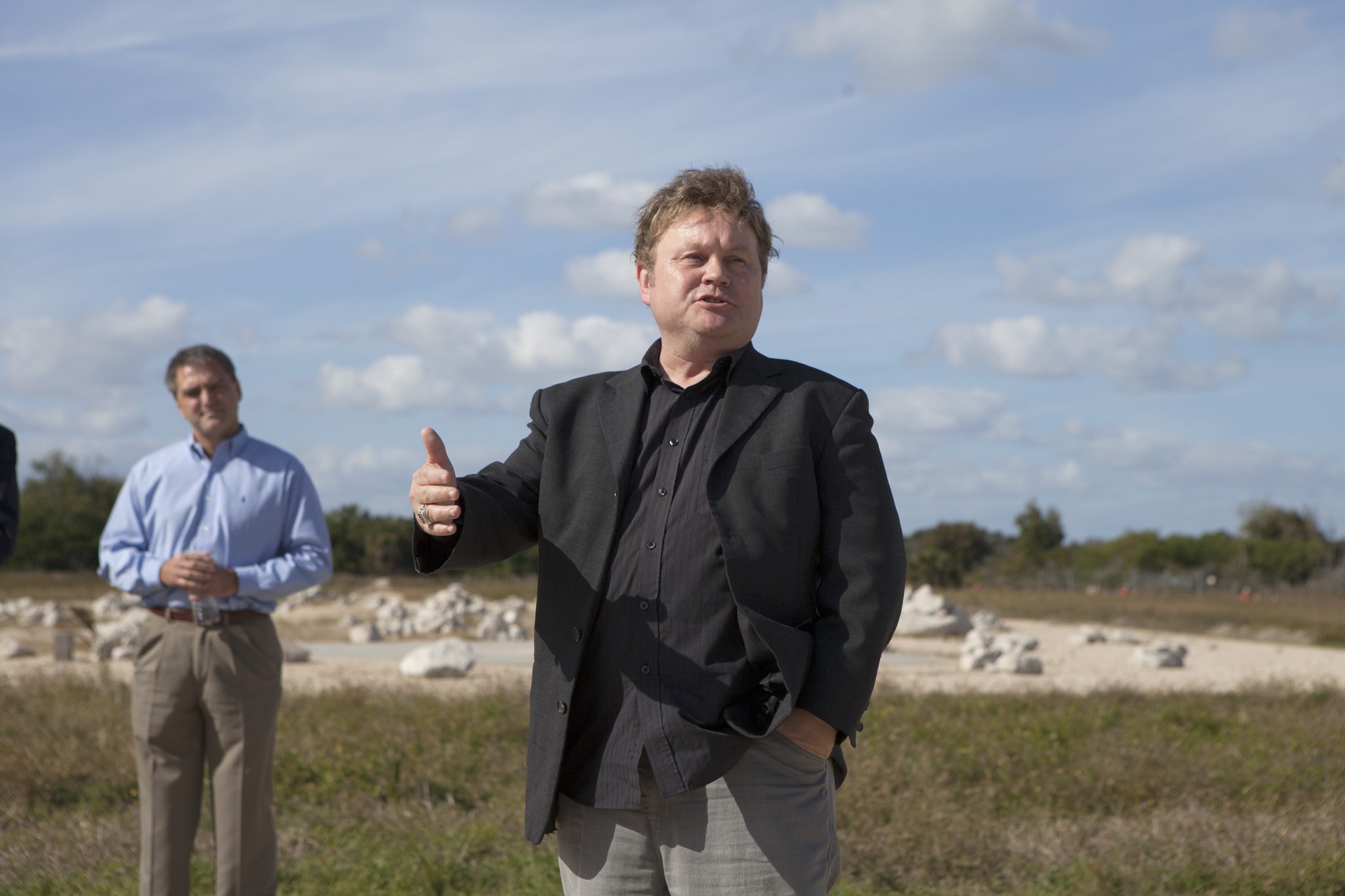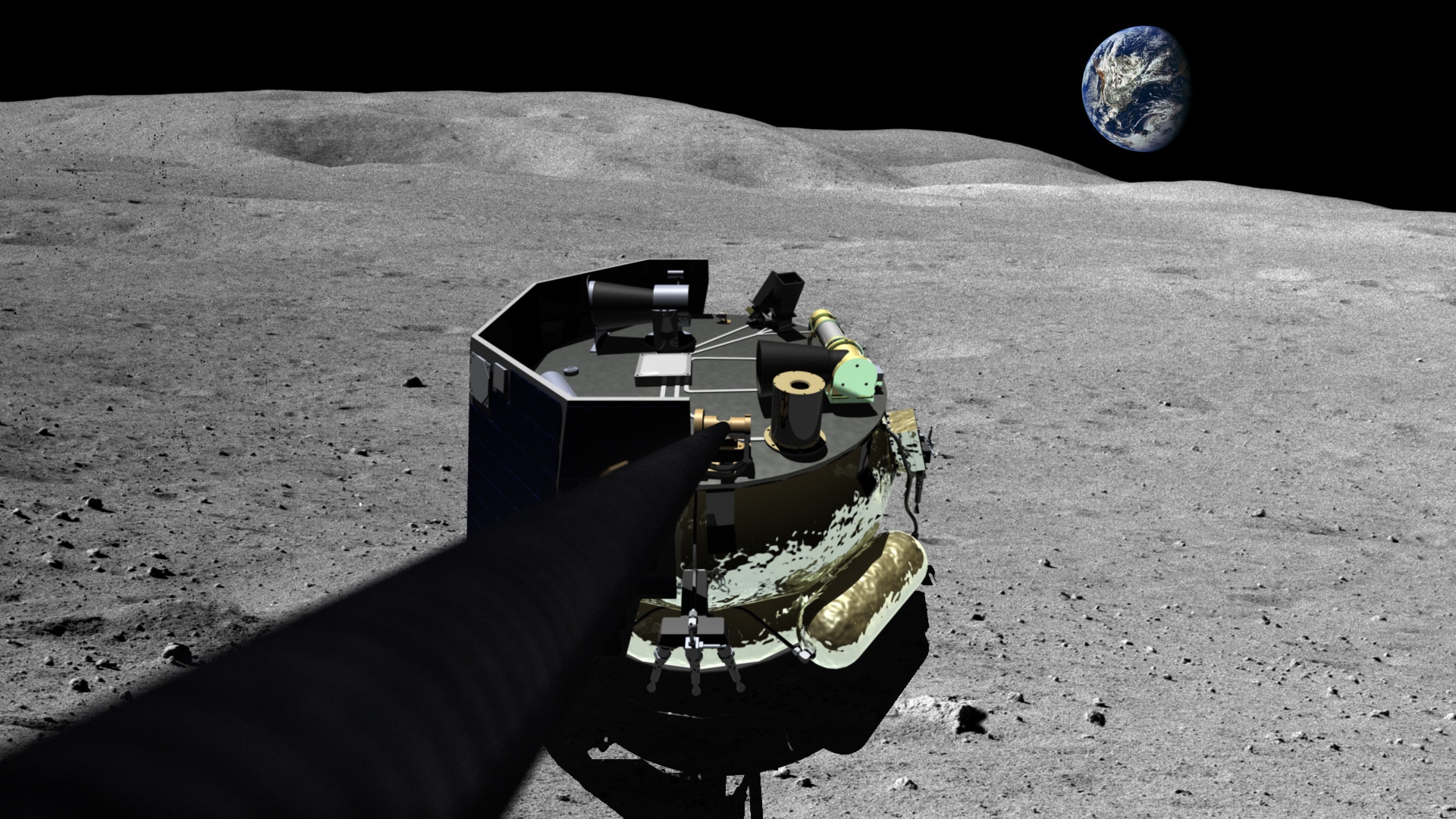NASA is working with U.S. industry to develop the capabilities and cutting-edge technologies that will help send astronauts beyond low-Earth orbit. To achieve this goal, space travelers will need the resources to survive during long-duration missions to an asteroid, Mars and other outer planets.
Moon Express Inc., of Moffett Field, California, is one of three companies selected for the agency’s new Lunar Cargo Transportation and Landing by Soft Touchdown (CATALYST) initiative to advance lander capabilities that will enable delivery of payloads to the surface of the moon.
Moon Express will base its operations at Kennedy Space Center in Florida, and is using facilities and the automated landing and hazard avoidance technology, or ALHAT field at the Shuttle Landing Facility, to perform its initial lander test development.
“Having Moon Express at Kennedy is yet another cornerstone moment in the transformation of the center to becoming a multi-user spaceport,” said Tom Engler, deputy director of Center Planning and Development. “A facility used by NASA’s Morpheus prototype lander will now be used by a commercial company.”
The Moon Express team has been busy since October preparing the test vehicle, called MTV-1X, for a series of tests. The compact vehicle is the size of a large coffee table. The version of this vehicle that will fly in space is a single-stage spacecraft that uses hydrogen peroxide as a primary fuel in a bi-propellant propulsion system bolstered by kerosene for its Earth departure and moon arrival burns. It’s also powered by solar energy, which makes it a very green vehicle.
Activity at the ALHAT field began in December. The team transported the spacecraft out to the ALHAT pad and was able to pressurize the tanks up to 110 percent of maximum expected operating pressure (MEOP). This critical milestone checked out the control systems and cleared the way for future testing at MEOP.
“NASA has been a wonderful partner,” said Bob Richards, Moon Express founder and CEO. “We’re working beside the Morpheus team to build and test our own vehicle at Kennedy.”
Richards said they will use entrepreneurial and innovative ways to become the first private company to reach the moon within two years. The plan is to launch the lunar lander spacecraft, called MX-1, as a secondary payload on a maiden technology demonstration flight in 2016 on a mission to the moon.
“We want to unlock not just the mysteries, but the resources of the moon to benefit all humanity,” Richards said. “We’re preparing to live off the land on the moon, because there’s water there.”

The Moon Express lunar lander could be used to deliver commercial and government payloads to the moon.
This year, the vehicle’s guidance, navigation, control and operation will be checked during initial testing. According to Moon Express president Andy Aldrin, the team will use a crane to hover the vehicle and move it around at the ALHAT field to capture the vehicle milestone process. A series of tethered landing tests will be performed until enough confidence is established in vehicle control to do a free flight.
Early next year, another set of tests will occur. The same test vehicle will be used, with added hydrogen peroxide thrusters, a star tracker and some of the navigation controls that will be used on the actual flight vehicle.
Later in the year, more flight-like versions of the test vehicle will be built, called MTV-2 and MTV-3, which will utilize a unique fuel tank called a toroidal tank, which is shaped like a doughnut and will be installed on the vehicle and tested to determine how the fuel behaves as it swirls around in the tank. Aldrin said the advantage of a tank shaped like this is the vehicle can be packaged into a very compact spacecraft that holds a lot of propellant.
If testing goes well, the actual composite fuel tank will be added to the vehicle for further testing at the ALHAT field. At the hangar, the GNC software and some of the flight avionics are being prepared for flight vehicle testing.
“We want to support the exciting commercial innovations that come from partnerships like this one with Moon Express,” Engler said.
“One day we’ll learn how to use water on the moon to make the rocket fuel we need, to make the economics of all the resources on the moon viable,” Richards said.
The Advanced Exploration Systems Division of NASA’s Human Exploration and Operations Mission Directorate manages the Lunar CATALYST initiative as part of its Lander Technologies Project. The project is led by Marshall Space Flight Center in Huntsville, Alabama, but includes all of the NASA centers to support the partnership.
For more information about the Lunar CATALYST initiative, visit https://www.nasa.gov/lunarcatalyst. For more information about Moon Express, visit www.moonexpress.com.





























